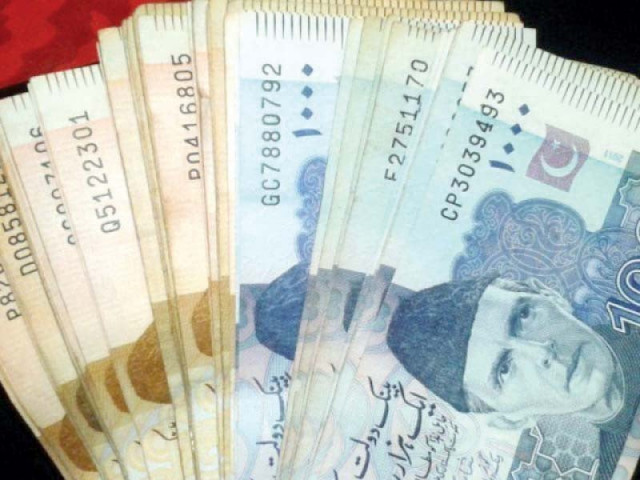SBP injects $1.2b to stabilise rupee
Central bank move contrary to its own, IMF and finance ministry policies

The State Bank of Pakistan (SBP) pumped $1.2 billion into the inter-bank market in three months to defend the weakening rupee but could not stop the local currency from falling to a historic low, highlighting the cost of expansionary policies without fixing the structural economic flaws.
The $1.2 billion injection into the foreign exchange market is contrary to the stated policies of the central bank, International Monetary Fund (IMF) and finance ministry, as all the three institutions claim that the rupee value is determined by market forces.
From mid-June to the first week of September, the central bank injected $1.2 billion out of its reserves, government sources told The Express Tribune. The maximum single-day injection of $100 million was made in July, followed by $85 million in August, they added.
The central bank reserves are built by taking expensive foreign loans like floating the Eurobond and issuing the expensive Naya Pakistan Certificates. The $1.2 billion injection was slightly higher than the $1 billion Eurobond loan that Pakistan took at 5.9% to 8.5% interest rate in July this year.
With the fresh injection, at least $5.8 billion has been thrown in the inter-bank market during the tenure of Pakistan Tehreek-e-Insaf (PTI) government to maintain an artificial value of the rupee.
Neither the Ministry of Finance nor the central bank explicitly denied that the SBP threw dollars in the market to defend the rupee.
“FX management is the sole responsibility of SBP and Finance Division does not interfere,” said the Ministry of Finance while responding to a question whether the SBP pumped money with the consent of the ministry.
“Since June 2019, Pakistan has adopted a market-based flexible exchange rate system, where the exchange rate is determined by market demand and supply conditions. Under this system, the role of SBP’s interventions in the FX market is limited to prevent disorderly market conditions, while not suppressing an underlying trend,” said SBP chief spokesman Abid Qamar.
However, sources said that the $1.2 billion did not fall under the category of intervention “to prevent disorderly market conditions”. They said that the move was against the fundamental policy of market-determined exchange rate and the central bank would have to explain this to the IMF during upcoming talks.
Qamar said that “when the exchange rate does not reflect realistic market conditions it can contribute to unsustainable current account deficits and repeated balance of payments problems”. SBP does not comment on speculations about market interventions, he added.
The chief spokesman neither denied nor confirmed that the central bank threw $1.2 billion in the market to defend the rupee.
But even the $1.2 billion injection could not stop a steep devaluation of the currency that eventually dipped to Rs168.94 to a dollar from Rs155.74 when the central bank started throwing money in the market.
The Pakistani currency hit an all-time low of Rs168.94 against the US dollar in the inter-bank market on Tuesday. The rupee has lost 7.28% or Rs11.51 to date since the start of the current fiscal year on July 1, 2021. This was despite the fact that since July the SBP threw $815 million in the exchange market, sources added.
The country’s external sector has started coming under pressure after the government adopted expansionary fiscal and monetary policies without first fixing the fundamental problems.
Like the PML-N government, the PTI government too is financing economic growth through debt, which is highly unsustainable, according to market analysts.
An Asian Development Bank study has come to the conclusion that with its existing structural problems, Pakistan is prone to the balance of payments crisis the moment its economic growth crosses 3.7%.
The country’s imports peaked to a new two-month record level of $12.1 billion in July and August, causing a $7.5 billion deficit, up by 120%.
“The trade deficit will increase but there is no need to worry about it,” Finance Minister Shaukat Tarin said on Tuesday while addressing a press conference.
He hoped that the trade deficit would be manageable, saying that if the economy over-heated the government would do some “tweaking”.
It is not for the first time that the central bank has pumped money into the inter-bank market to artificially defend the rupee.
The official record showed that from July 2012 to July 2013, the central bank pumped $3.43 billion into the inter-bank market.
Published in The Express Tribune, September 15th, 2021.
Like Business on Facebook, follow @TribuneBiz on Twitter to stay informed and join in the conversation.


















COMMENTS
Comments are moderated and generally will be posted if they are on-topic and not abusive.
For more information, please see our Comments FAQ